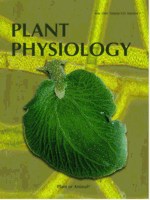Elysia chlorotica & mating chains
May 17, 2000
From: Liz Summer

Dear Bill,
Following your photo of Sea Hare mating chains. Our E. chlorotica also forms mating chains of commonly 3 but sometimes more animals. They also have a lot of other peculiar habits - the most striking one is their apparent "sunning" behavior. When the aquarium lights first come on, they quickly glide over under the lights and flatten out (like the picture on the cover of Plant Physiology). After a while, they all go to the "shady" part of the aquarium (i.e. near the corner filter) where they keep their parapodia folded. These are purely anecdotal accounts as none of us are qualified animal behaviorists!
Thanks,
Liz Summer
elizsum@aol.com
Summer, E., 2000 (May 17) Elysia chlorotica & mating chains. [Message in] Sea Slug Forum. Australian Museum, Sydney. Available from http://www.seaslugforum.net/find/2405Dear Liz,
I am sure studying the "sunning' behaviour of any of these solar powered animals would be very interesting. When I was teaching at the University of Dar es Salaam many years ago I used to show students how the little bright-green photosynthetic flatworm Convoluta, which forms green smears across the sand at a certain level on the shore, seemed to adapt its position for optimal light intensity. I would put a 'few' Convoluta [1-200?] in a glass cylinder with sand and seawater and cover the outside of the cylinder so no light can enter from the sides, and then shine a light down from the top. The flatworms would form a distinct green band in the sand. If the light intensity was increased the green band would sink deeper in the sand and vice versa.
Another example would be the specialised tropical elysiid Plakobranchus which lives in coral sand in the glaring light of shallow tropical waters. Unlike temperate elysiids which flaunt their chloroplasts in the sunlight, Plakobranchus hides its chloroplasts under its folded parapodia. My guess is that it is protecting the plastids from being burnt out by too much light. It would be a nice study for someone to undertake.
Any more interesting notes on your solar powered animals, especially with photos, will always be welcome
Best wishes,
Bill Rudman.
Related messages
-
Lateral gene transfer between multicellular organisms
From: Bill Rudman, August 15, 2007 -
Elysia chlorotica "ghosts".
From: Skip Pierce, June 15, 2005 -
Elysia chlorotica from Martha's Vineyard, USA
From: skip pierce, May 14, 2005 -
Elysia anatomy
From: Kathleen Archer, November 13, 2003 -
New Paper on Elysia chlorotica
From: Elizabeth J. Summer, September 22, 2000 -
Trouble finding Elysia chlorotica
From: Jack Teng, August 4, 2000 -
Re: Elysia chlorotica & mating chains
From: Kathe R. Jensen, May 18, 2000 -
Re: Elysia sp. 7 from Texas
From: Kathe R. Jensen, May 7, 2000 -
Solar-powered Elysia chlorotica
From: Liz Summer, February 26, 2000 -
Elysia from Texas
From: Cathy Porter, February 23, 2000
